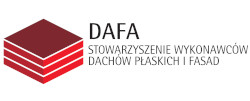Open Access (Artykuł w pliku PDF)
Impact of raster angle on the mechanical properties of PLA-IMPACT polymer in 3D printing technology
dr inż. Paweł Boroń, Politechnika Krakowska; Wydział Inżynierii Lądowej
ORCID: 0000-0003-4977-6574
prof. dr hab. inż. Joanna Dulińska, Politechnika Krakowska; Wydział Inżynierii Lądowej
ORCID: 0000-0002-4140-8120
dr inż. Nadzieja Jurkowska, Politechnika Krakowska; Wydział Inżynierii Lądowej
ORCID: 0000-0003-1287-2861
prof. dr hab. inż. Tadeusz Tatara, Politechnika Krakowska; Wydział Inżynierii Lądowej
ORCID: 0000-0002-4071-2358
Adres do korespondencji: Ten adres pocztowy jest chroniony przed spamowaniem. Aby go zobaczyć, konieczne jest włączenie w przeglądarce obsługi JavaScript.
DOI: 10.15199/33.2022.04.02
Oryginalny artykuł naukowy
Streszczenie. Celem pracy jest poznanie możliwości i uwarunkowań stosowania modeli wykonanych w technologii druku 3D do badań dynamicznych. Zaprezentowano metodę i wyniki badań określających parametry fizykomechaniczne polimeru PLA- -IMPACT drukowanego z różnymi kątami rastrowania. Badania wykazały, że wartość modułu sprężystości polimeru nie zależy od kąta rastrowania, natomiast na granicę plastyczności ma wpływ kierunek laminacji, co wpływa w istotny sposób na realizację modeli obiektów do badań dynamicznych.
Słowa kluczowe: druk 3D; materiał PLA; charakterystyki materiałowe; model dynamiczny.
Abstract. The aim of the work is to identify the possibilities and conditions for the use of models made in 3D printing technology for dynamic experiments. The methodology and results of tests determining the physical and mechanical parameters of the PLA- -IMPACT polymer printed with different screening angles are presented. The research showed that the value of the polymermodulus of elasticity does not dependonthe rasteringangle, while theyieldpoint depends on the direction of lamination, which is of key importance in the implementation of models of objects for dynamic tests.
Keywords: 3D printing; PLA material; material characteristics; dynamic model.
Literatura
[1] Perkins I, Skitmore M. Three-dimensional printing in the construction industry:Areview. Int J Constr Manag. 2015; 15 (1): 1 – 9. DOI: 10.1080/15623599.2015.1012136.
[2] Dodziuk H. Druk 3D w budownictwie. Napędy i Sterowanie. 2020; 22 (12): 41 – 47.
[3] Piestrzyński P. Światowy poziom XI Konferencji DNI BETONU. Materiały Budowlane. 2021; 11: 74 – 75.
[4] Bos F,Wolfs R, Zeeshan A, Salet T. Additive manufacturing of concrete in construction: Potentials and challenges of 3D concrete printing. Virtual Phys Prototyp. 2016; 11 (3): 209 – 225. DOI: 10.1080/17452759.2016.1209867.
[5] HoffmannM, Skibicki S, Pankratow P, Zieliński A, Pajor M, Techman M. Automation in the construction of a 3D-printed concrete wall with the use of a lintel gripper. Materials. 2020; 13 (8): 1800. DOI: 10.3390/ma13081800.
[6] Asprone D, Auricchio F, Menna C, Mercuri V. 3D printing of reinforced concrete elements: Technology and design approach. ConstrBuild- Mater. 2018; 165: 218 – 231. DOI: 10.1016/j. conbuildmat. 2018.01.018.
[7] Lim JH, Yiwei W, Quang-Cuong P. 3D printing of curved concrete surfaces usingAdaptable Membrane Formwork. Constr Build Mater. 2020; 232: 117075. DOI: 10.1016/j. conbuildmat. 2019.117075.
[8] PerrotA, Rangeard D, PierreA. Structural built- up of cement-based materials used for 3D- -printing extrusion techniques. MaterStruct. 2015; 49 (4): 1213 – 1220. DOI: 10.1617/s11527- -015-0571-0.
[9] Wang X, Zhang P, Ludwick S, Belski E, ToA. Natural frequency optimization of 3D printed variable- density honeycomb structure via a homogenization- based approach.AdditManuf. 2017; 20: 189 – 198. DOI: 10.1016/j.addma.2017.10.001.
[10] Richards D, Darryll. Pines Passive reduction of gear mesh vibration using a periodic drive shaft. J SoundVib. 2003; 264 (2): 317 – 342. DOI: 10.1016/s0022-460x (02) 01213-0.
[11] Guo Z, Hu G, Jiang J, Yu L, Li X, Liang J. Theoretical and experimental study of the vibration dynamics of a 3D-printed sandwich beam with an hourglass lattice truss core. Front Mech Eng. 2021; 7: 651998. DOI: 10.3389/fmech.2021.651998.
[12] GuptaV,Adhikari S, Bhattacharya B. Exploring the dynamics of hourglass shaped lattice metastructures. Sci Rep-UK. 2020; 10: 20943. DOI: 10.1038/s41598-020-77226-4.
[13] Krawinkler H, Moncarz P. Similitude requirements for dynamic models, dynamic modeling of concrete structures.Aci publication. 1982; 73: 1 – 22.
[14] Li S,Wu C, Kong F. Shaking tablemodel test and seismic performance analysis of a high-rise RC shear wall structure. Shock Vib. 2019; 6189873. DOI: 10.1155/2019/6189873.
[15] Silvestri S, Baraccani S, Foti D, Ivorra S, Theodossopoulos D,VaccaV, Romana JO, Cavallini L,Mokhtari E,White R, DietzM,Mylonakis G. Shaking table testing of groin vaults made by 3D printers. Soil Dyn Earthq Eng. 2021; 150: 106880. DOI: 10.1016/j.soildyn.2021.106880.
[16] Bianchini N,Mendes N, Calderini C, Candeias PX, Rossi M, Lourenço PB. Seismic response of a small-scale masonry groin vault: experimental investigation by performing quasi-static and shake table tests. B Earthq Eng. 2022; 20: 1739 – 1765. DOI: 10.1007/s10518-021-01280-0.
[17] Bajpai P, Singh I, Madaan J. Development and characterization of PLA-based green composites: A review. J Thermoplast Compos. 2012; 27 (1); 1-30. DOI: 10.1177/0892705712439571.
[18] Anwer M, Naguib H. Study on the morphological, dynamic mechanical and thermal properties of PLA carbon nanofibre composites. Compos Part B. 2016; 91; 631 – 639. DOI: dx. doi. org/10.1016/j. compositesb. 2016.01.039
[19] Fekete I, Ronkay F, Lendvai L. Highly toughened blends of poly (lactic acid) (PLA) and natural rubber (NR) for FDM-based 3D printing applications: The effect of composition and infill pattern. PolymTest. 2021; 99: 107205. DOI: doi. org/10.1016/j. polymertesting. 2021.107205.
[20] www.thomasnet.com/insights/do-bioplastics- have-a-place-in-automotive-manufacturing [Acces: 20.03.2022].
[21] Tümer EH; Erbil HY. Extrusion-based 3D printing applications of PLA composites: A review. Coatings. 2021; 11; 390. DOI: 10.3390/coatings11040390.
[22] Singh B, Kumar R, Chohan JS. Polymer matrix composites in 3D printing: A state of art review. Mater Today. 2020; 33 (3): 1562 – 1567. DOI: 10.1016/j.matpr. 2020.04.335.
[23] Algarni M. The influence of raster angle andmoisture content on themechanical properties of PLA parts produced by fuseddeposition modeling. Polymers. 2021; 13 (2): 237. DOI: 10.3390/polym13020237.
[24] Maszybrocka J, Dworak M, Nowakowska G, Osak P, Łosiewicz B. The influence of the gradient infill of PLA samples producedwith the FDM technique on their mechanical properties. Materials. 2022; 15 (4): 1304. DOI: 10.3390/ma- 15041304.
[25] PN-EN ISO 527-1:2020-01 Tworzywa sztuczne – Oznaczanie właściwości mechanicznych przy statycznym rozciąganiu – Część 1: Zasady ogólne. 2020.
[26] PN-EN ISO 527-2:2012 Tworzywa sztuczne – Oznaczanie właściwości mechanicznych przy statycznym rozciąganiu – Część 2: Warunki badań tworzyw sztucznych przeznaczonych do prasowania, wtrysku i wytłaczania. 2012.
[27] Tatara T, Ratajewicz B. Wpływ stanu technicznego komina żelbetowego na jego właściwości dynamiczne. Inżynieria i Budownictwo. 2015; 71 (1): 3 – 7.
Przyjęto do druku: 29.03.2022 r.
Materiały Budowlane 04/2022, strona 6-10 (spis treści >>)



























